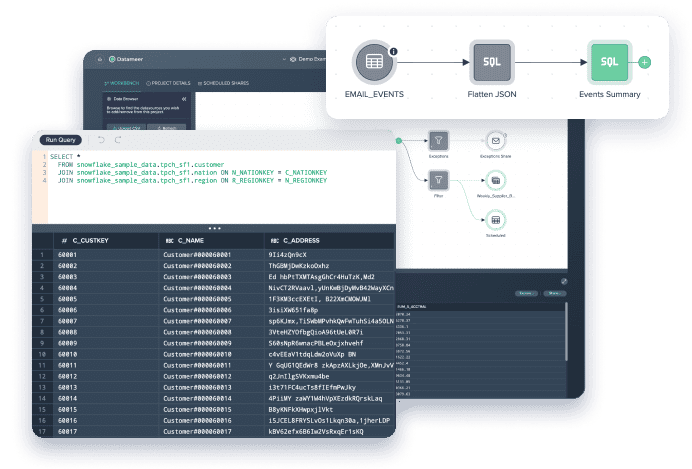How visualizing your SQL dependencies helps data teams more efficiently code
- Stephen Butts
- May 19, 2023

Visualizing SQL dependencies can assist in writing efficient code. With complex modern data architectures, it can be difficult to comprehend the connections between various code components, which is essential for data teams that value writing efficient SQL code.
Understanding SQL Dependencies
SQL dependencies refer to the links between various components of your SQL code, like tables, views, functions, and stored procedures. Comprehending these dependencies in intricate data structures can be challenging, but grasping them is crucial for writing efficient code.
Data teams need to understand the data model, which shows how different data entities like customers, orders, and products are linked, to determine SQL dependencies. Once they have a clear understanding of the data model, data teams can enhance the effectiveness of their SQL code by identifying connections between different parts of it.
Common Challenges in SQL Code Optimization
- Duplicate Data: To prevent optimization challenges and reduce processing and storage costs, data teams should simplify their data and analyze the connections between code segments to avoid storing the same data in multiple tables or views.
- Unoptimized Queries: Understanding the relationship between code components and data models is crucial for data teams. Poor data modeling can hurt SQL code performance and make it challenging to manage complex data structures, leading to slower queries. Therefore, it is important to appropriately design and optimize data models to avoid errors and achieve optimal query performance.
Why Visualizing Dependencies Helps
There are several advantages to visualizing your SQL dependencies. One of them is that it helps your team better comprehend how different parts of the code are connected. Additionally, it allows you to pinpoint areas where modifying one part of the code could affect others, which can aid in making informed decisions about future changes.
To enhance the performance of your code, it can be beneficial to generate a visual representation of its dependencies. This will help you pinpoint redundant or inefficient sections by analyzing how their components interact. You can also identify areas where duplicate data is used or unnecessary calculations occur. Simply making these improvements can lead to a better-performing code.
Visualizing the dependencies in your SQL code can help you understand how changes to one component may affect others. Altering a single code component can result in a ripple effect on the other components. Visualizing these dependencies can assist you in anticipating and preventing errors, enhancing your overall system understanding.
Best Practices for Visualizing SQL Dependencies

Here are some helpful tips for improving your data team’s coding process with SQL dependency visualization:
- Understand your data model: With a comprehensive understanding of your underlying data model, you can easily elevate SQL performance and minimize errors! Identifying relationships between entities means taking the guesswork out of optimization – knowing what values are connected and how they interact puts you in control.
- Look across multiple data sources: With a map of illicit SQL connections, new insight can be brought to light about the relationship between data sources and streamlined coding efforts. Unearth the secret world beneath your database today!
- Documenting dependencies: With data lineage diagrams, your team’s crystal ball is always in focus! Let them serve as the GPS of an otherwise unexplored terrain. Investigate new insights and discoveries with these valuable tools for any journey into the world of data science.
- Share documentation: To ensure your data team is fully equipped with the necessary skills and knowledge to use SQL dependencies efficiently, create informative documentation for them! This resource should cover a range of topics such as the data model, code snippets & examples, plus helpful tips on using these powerful tools.
How Datameer Can Help
Working with your Snowflake data can be like assembling an intricate jigsaw puzzle. It takes time and effort to make all the pieces fit, but once you figure out those connections between datasets, it’s a truly rewarding experience! With persistence, juggling these various databases will no longer be stressful – instead, focus on achieving that overall goal.
Are you struggling to stay afloat in a blizzard of data? Let Datameer be your lifeline! Our platform effortlessly simplifies the management of snowflake datasets, delivering automatic documentation updates for smooth sailing through ever-changing seas.
So get started with Datameer, and accelerate your data transformation processes today!


